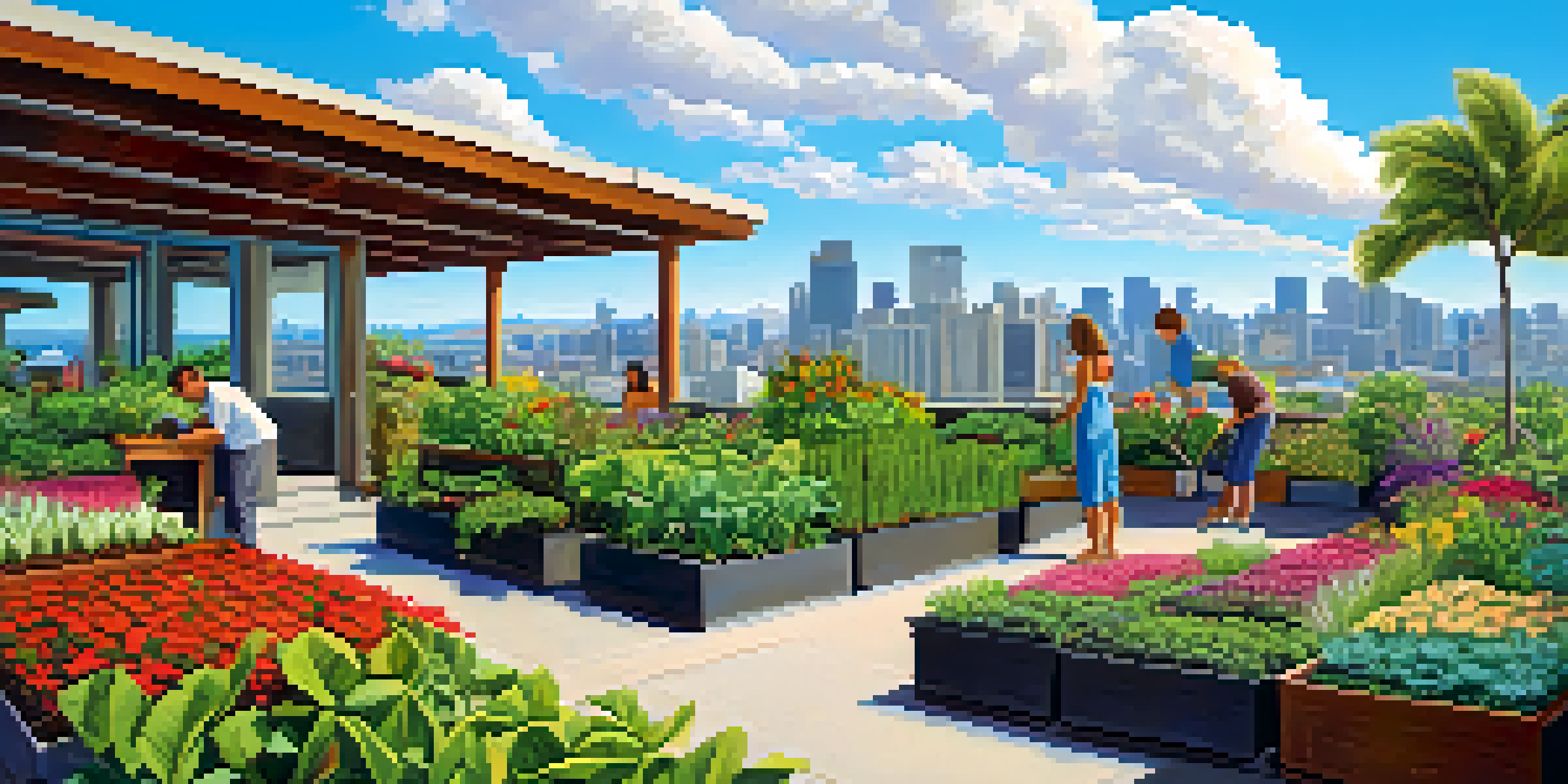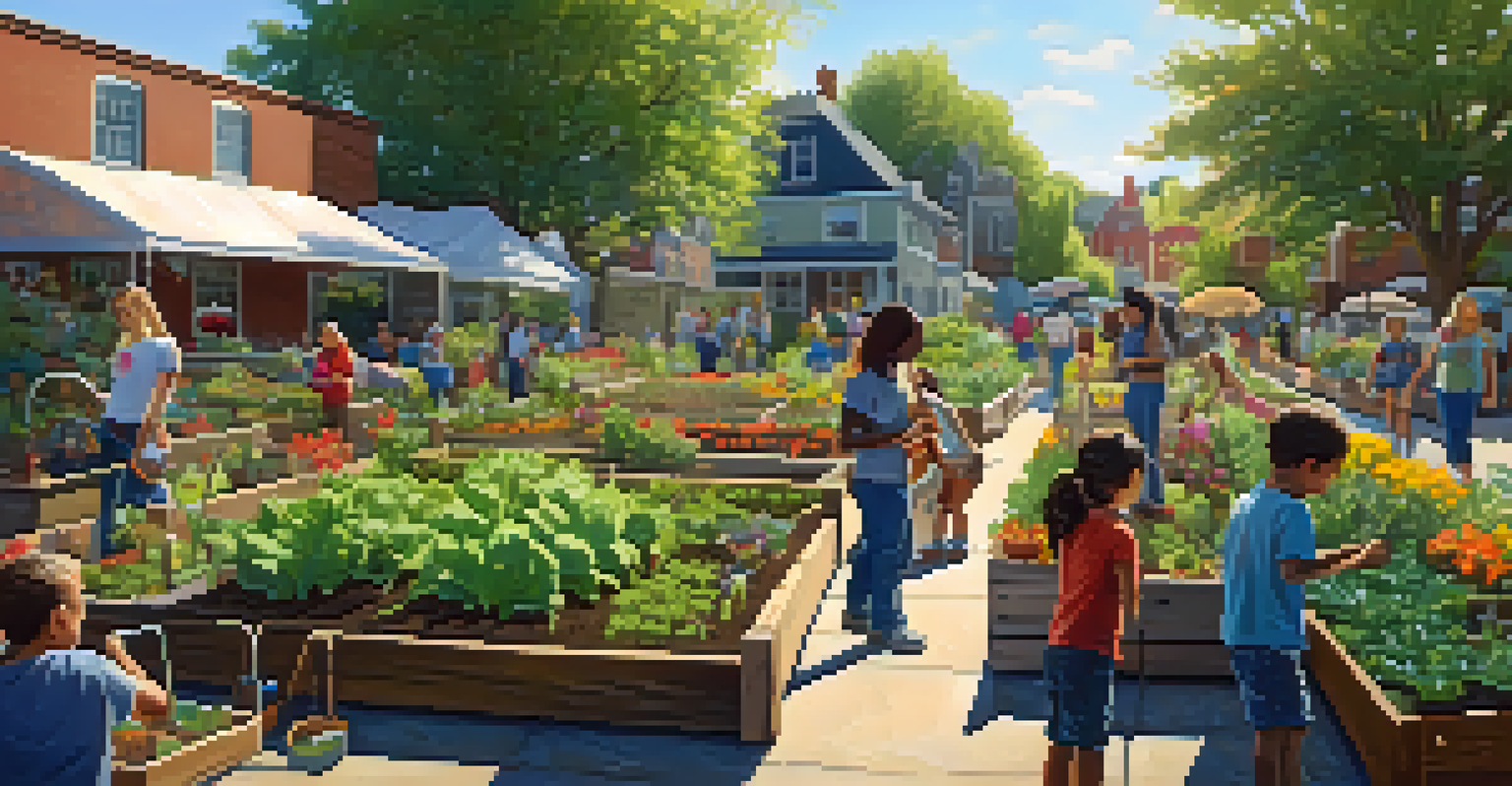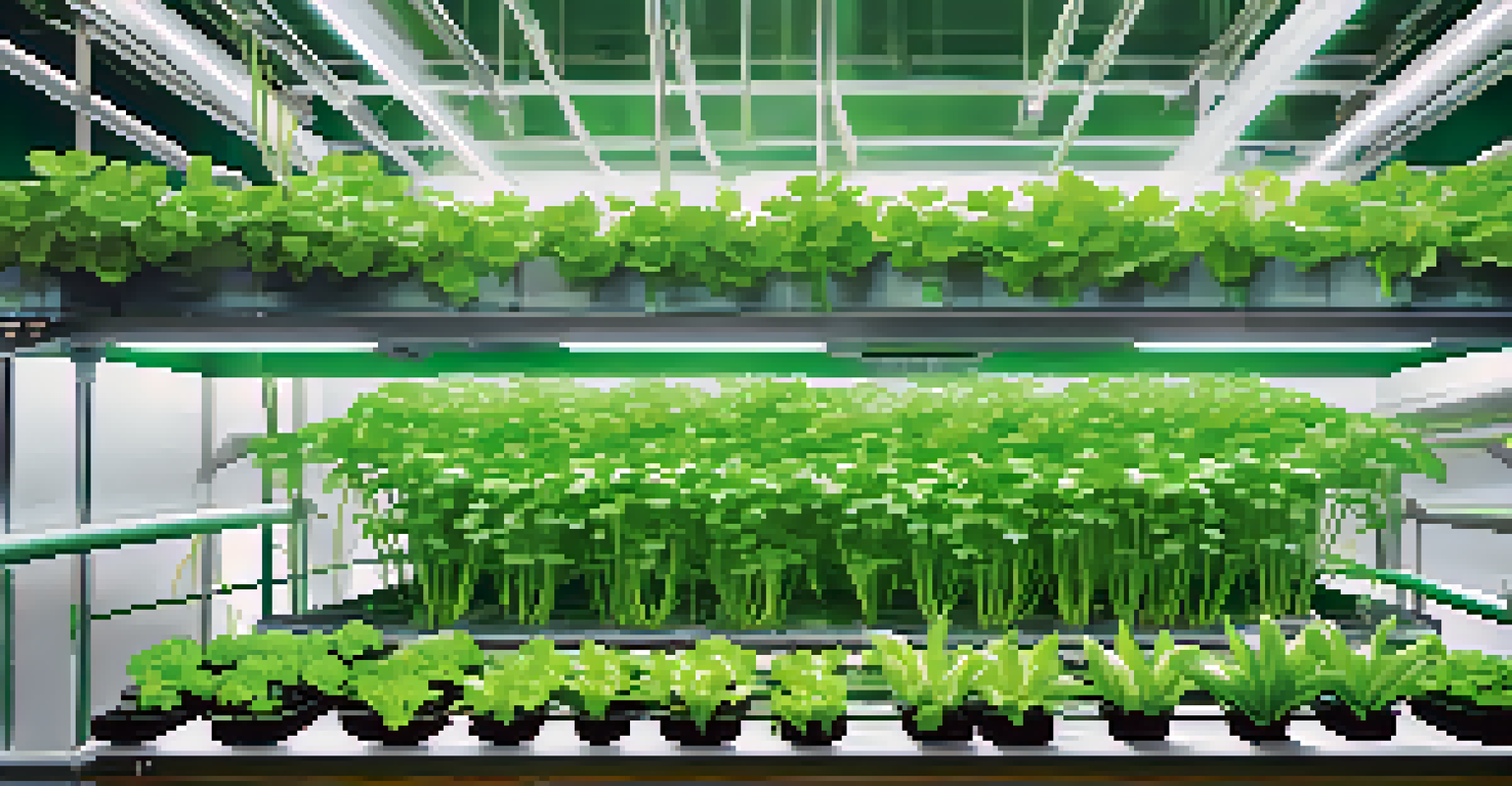The Rise of Urban Gardening in Honolulu: A Sustainable Shift

Understanding Urban Gardening: A Brief Overview
Urban gardening refers to growing plants in urban areas, often in limited spaces. This can include everything from backyard gardens to rooftop farms and community plots. In cities like Honolulu, these gardens are becoming a vital part of the urban landscape, providing fresh produce and green spaces.
The greatest fine art of the future will be the making of a comfortable living from a small piece of land.
The concept promotes sustainability and self-sufficiency, allowing city dwellers to connect with nature. With the rise of food deserts in metropolitan areas, urban gardening has emerged as a solution to ensure access to fresh, healthy food. It's a movement that not only beautifies neighborhoods but also fosters community.
As more residents turn to urban gardening, the impacts are significant. It encourages biodiversity, improves air quality, and can even mitigate the urban heat island effect. In essence, urban gardening is more than just a trend—it's a lifestyle choice that aligns with modern sustainability goals.
Honolulu's Unique Climate: A Gardener's Paradise
Honolulu's tropical climate is ideal for a diverse range of plants, making it a perfect setting for urban gardening. With warm temperatures and ample rainfall, residents can grow fruits, vegetables, and ornamental plants year-round. This climate allows for creativity and experimentation in gardening practices.

Local gardeners often take advantage of native Hawaiian plants, which are well-suited to the environment. By incorporating these species, gardeners not only create beautiful landscapes but also help preserve local biodiversity. It’s a win-win for both the environment and the community.
Urban Gardening Boosts Community
Urban gardening fosters community engagement by providing shared spaces where residents can collaborate and learn from each other.
The city's environment encourages the use of sustainable gardening practices, such as composting and water conservation. These practices not only support healthy plant growth but also reduce waste and promote a circular economy. In this way, Honolulu’s climate plays a crucial role in the rise of urban gardening.
Community Engagement Through Urban Gardening
Urban gardening fosters a sense of community among residents, allowing them to connect over a shared passion for growing food. Community gardens often serve as gathering places where neighbors can collaborate, share resources, and learn from one another. This interaction builds strong social ties and enhances community resilience.
To plant a garden is to believe in tomorrow.
Many organizations in Honolulu promote urban gardening initiatives through workshops and educational programs. These initiatives empower residents with the skills needed to cultivate their own gardens, fostering a culture of self-reliance. By learning together, community members also strengthen their connections to one another and to the land.
Events like garden tours and harvest celebrations further enhance community involvement. These gatherings not only showcase the fruits of labor but also create opportunities for local residents to share their gardening successes and challenges. Such events help to inspire others to join the movement and contribute to a greener Honolulu.
The Role of Technology in Urban Gardening
Technology is playing an increasingly important role in urban gardening, making it easier for residents to grow their own food. From smartphone apps that provide gardening tips to smart sensors that monitor soil moisture, tech innovations are enhancing the gardening experience. These tools help gardeners make informed decisions about plant care.
Hydroponics and vertical gardening systems are also gaining popularity in urban areas. These methods allow for efficient use of space and resources, making it possible to grow more food in smaller areas. In a densely populated city like Honolulu, such innovations can significantly increase food production.
Honolulu's Climate Supports Growth
The tropical climate of Honolulu allows residents to grow a variety of plants year-round, promoting creativity and sustainability in urban gardening.
Additionally, online communities and social media platforms allow urban gardeners to connect, share knowledge, and inspire one another. This digital exchange of information creates a supportive network that encourages more people to take up gardening. Technology, thus, is not just a tool but also a catalyst for the urban gardening movement.
Environmental Benefits of Urban Gardening
Urban gardening contributes significantly to environmental sustainability by promoting biodiversity and reducing carbon footprints. Plants help absorb carbon dioxide and produce oxygen, improving air quality in urban settings. Moreover, gardens can act as natural habitats for various species, supporting local ecosystems.
By growing food locally, urban gardening reduces the need for transportation and packaging, which are major contributors to greenhouse gas emissions. This shift towards local food production not only supports sustainability but also strengthens food security. Residents can enjoy fresh produce while minimizing their environmental impact.
Furthermore, urban gardens have the potential to manage stormwater runoff effectively. By absorbing rainwater, gardens help prevent flooding and reduce the burden on municipal drainage systems. In this way, urban gardening offers practical solutions to some of the pressing environmental challenges faced by cities.
Challenges Faced by Urban Gardeners in Honolulu
While urban gardening offers numerous benefits, it also comes with its set of challenges. Limited space is often a significant hurdle, particularly in densely populated areas like Honolulu. Gardeners must find creative ways to maximize small plots, which can be challenging for those new to gardening.
Another challenge is the availability of resources, such as soil and water. Urban gardeners may struggle to access quality soil or consistent water supply, especially during dry seasons. This scarcity can hinder successful gardening efforts and dissuade novice gardeners from continuing.
Technology Enhances Gardening Practices
Innovative technologies, such as smartphone apps and hydroponics, are making urban gardening more accessible and efficient for city dwellers.
Pests and local wildlife can also pose threats to urban gardens. From insects to birds, various creatures may disrupt plant growth. Gardeners need to develop strategies to protect their plants while maintaining harmony with the local ecosystem, which can be a delicate balancing act.
The Future of Urban Gardening in Honolulu
The future of urban gardening in Honolulu looks promising as more residents embrace sustainable practices. With a growing awareness of food security and environmental issues, urban gardening is expected to gain even more traction. This movement could play a crucial role in shaping the city’s approach to sustainability.
As urban gardening becomes more integrated into community planning, we may see more public spaces dedicated to green initiatives. City officials and organizations are recognizing the importance of green spaces in urban settings, which can lead to increased support for community gardens and educational programs.

In conclusion, the rise of urban gardening in Honolulu represents a significant shift towards sustainability. By empowering residents to grow their own food, strengthen community ties, and protect the environment, urban gardening has the potential to transform the city into a greener, more resilient place to live.